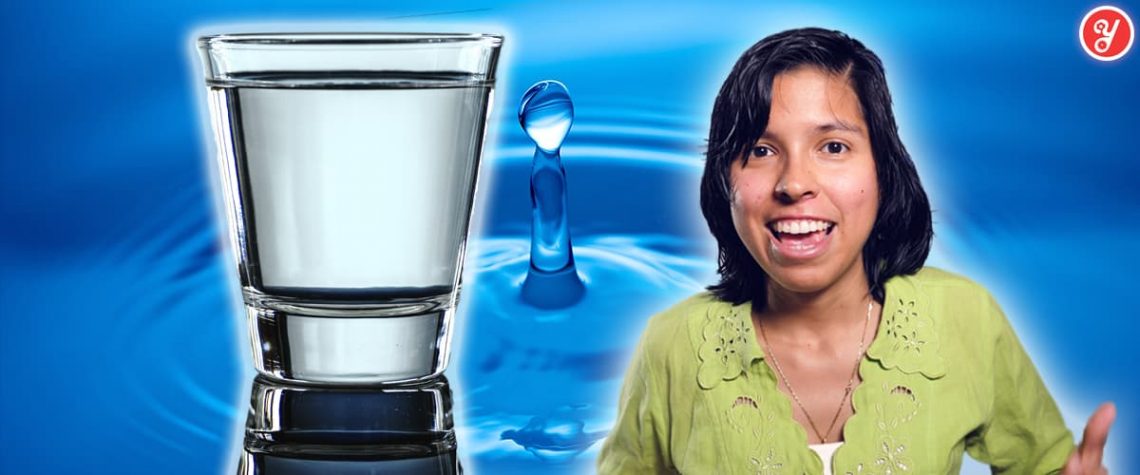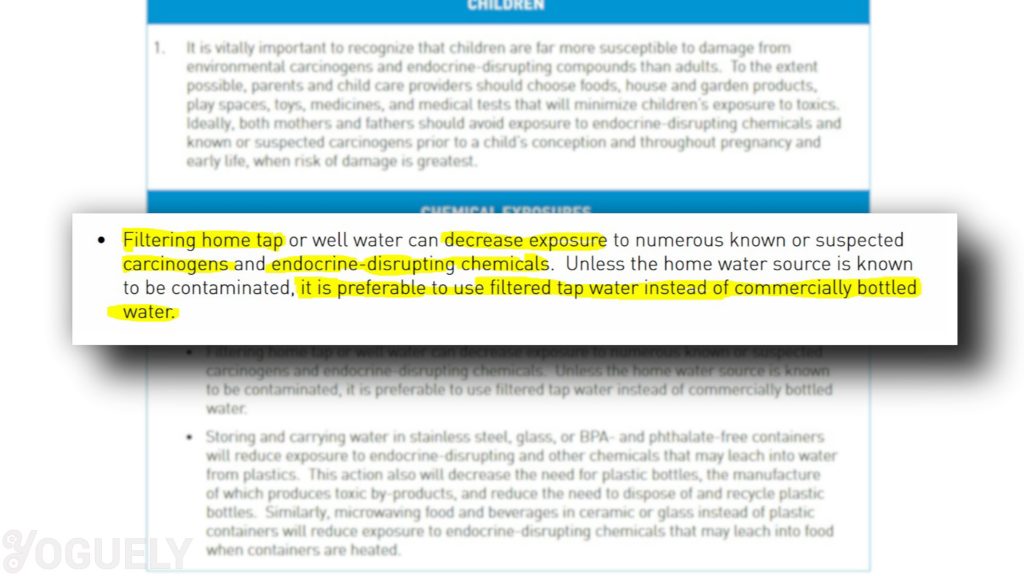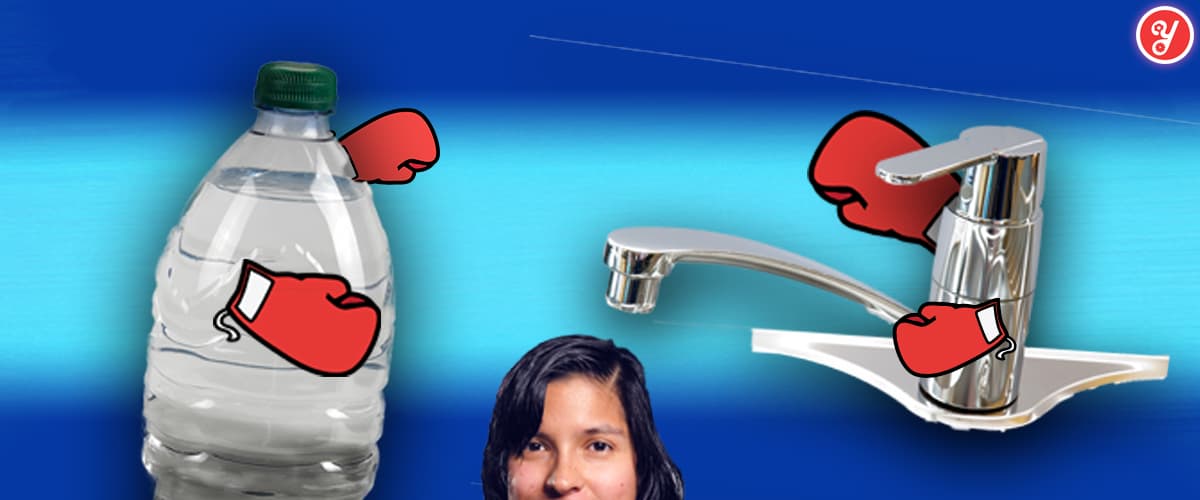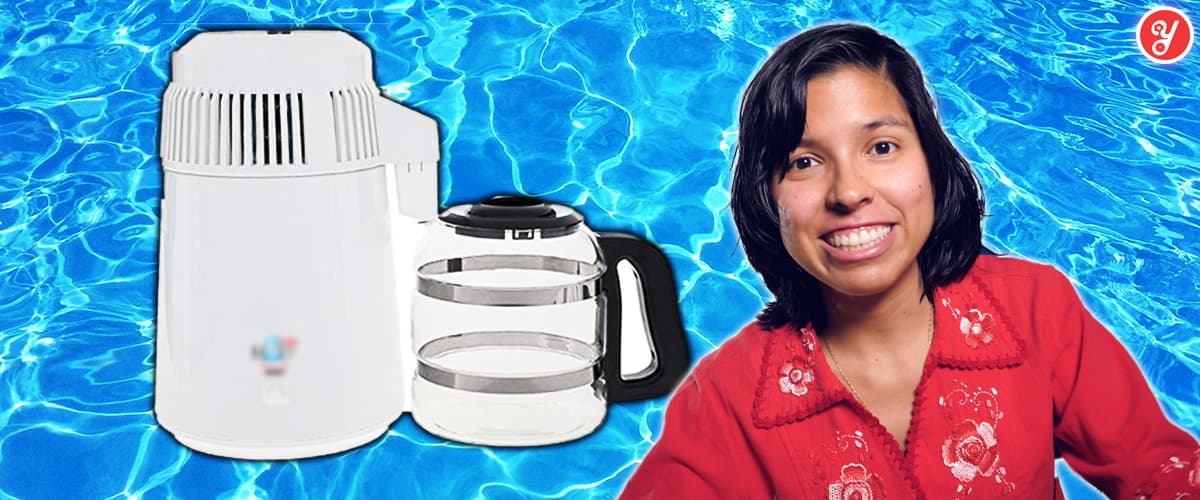Yoguely is reader-supported. When you buy through links on our site, we may earn an affiliate commission. Learn more
How To Purify Water at Home (Water Filter System)

Today you’re going to learn exactly how to make safe drinking water at home and why purified water is good for health.
In fact:
This water has been filtered to remove impurities that are harmful for your health. Including cysts, bacteria, viruses, carcinogenic toxins such as BPA and perfluorinated chemicals, pesticides and herbicides, and harmful chemical contaminants such as chlorine, lead, and fluoride.
I’m your host Aida Yoguely. Let’s get started.
Which Is the Ideal Drinking Water to Consume for Your Body?
The water that is best for your health is water without unwanted pollutants and without harmful toxins. It is great if the water has nutritional minerals dissolved in it. But it is still healthy to drink pure water without minerals. This is because food is the biggest source where we consume those nutrients.[76]
How Do You Get the Best Water to Drink?
The first source we previously considered in depth is tap water. Tap water is regularly tested for certain known pollutants. But that doesn’t always mean that their levels are controlled within health guidelines.
Then there are many unknown contaminants in tap water which go unregulated. So we can confidently rule out tap water as “the best” water to drink.
The next option we looked at was bottled water. We found that it is not necessarily always better for our health compared to tap water. And it’s much worse for the environment. For this reason, we quickly discarded bottled water as an option.
But what can you do to get super safe and clean water?
The President’s Cancer Panel released an annual report on what we can do now to reduce environmental cancer risk. There they state that filtering home tap water can decrease exposure to numerous carcinogens and endocrine-disrupting chemicals you consume.[42]
They also state that “it is preferable to use filtered tap water instead of commercially bottled water.”[42]

So, filtering tap water from home is the safest way to be sure you’re getting the best drinking water.
Since we want the least number of harmful contaminants, what we need is purified water.
What is Purified Water?
First off, purified water is the cleanest water you can drink. The cool part is that you can make it from any water source.
You can do this by treating it to meet two requirements:
The first is to be free of microbes.
The second is to have less than 10 mg/l of total dissolved solids.[16]
Ten mg/l is such a small amount that it’s almost to say that it is virtually free from all chemicals. The good and the harmful.
So, you could say that the best water to drink “without chemicals”, is purified water.
Purification takes care of lead, fluoride, and chlorine removal. And also, impressively the removal of cysts, bacteria, viruses, carcinogenic toxins such as BPA and perfluorinated chemicals, pesticides and herbicides. Purification also inactivates viruses such as the coronavirus from the current COVID-19 pandemic.
So you might be wondering,
Is Drinking ONLY Purified Water Bad for You?
Purified water is demineralized water since it doesn’t have electrolytes, magnesium, calcium, and other nutrients that are nutritional for us. In that case,
would it be OK to drink demineralized water?
Well it is not ideal to miss out on using healthy drinking water as a source of minerals. Luckily, we can get most of those minerals from foods like fruits, veggies, and nuts.
The essential nutrients you get from drinking tap water make up a small itty-bitty contribution to your nutritional needs.[76] Missing out on minerals in water would have virtually no negative impact on your health.
So, it’s simply not worth it for you to take the risk of ingesting harmful substances in an effort to absorb those minerals.
However, if you prefer the taste of minerals in your water, you can always remineralize the purified water by adding back the minerals you want, such as calcium.
How to Purify Water at Home
Two popular ways to purify water at home are through distillation and reverse osmosis.
Both water treatment processes work very differently to each other. However, they both are easy to install and yield purified water.
In case all these water terms are getting confusing and you are wondering…
Is Purified Water the Same as Distilled Water and Reverse Osmosis Water?
No they are not the same. Distilled water and reverse osmosis water is a subset of purified water. In other words, distillation and reverse osmosis are two processes that yield purified water. Consequently not all purified water is distilled water, but distilled water is a kind of purified water.
{DI, RO} ⊆ Purified Water
Got it?
Therefore, you can substitute distilled water in your cooking recipes with any other form of purified water and it would have the same properties.
Since purified water is not harmful for our bodies, drinking reverse osmosis or distilled water will not be bad for you either.
The ultimate question though is,
Which of the Two Water Purification Methods Is Best?
Both distillation and reverse osmosis systems can yield highly purified water. Distillation is one of the oldest used methods to treat water. But reverse osmosis water is faster to make, does not need electricity to work, and you can configure it to your liking. The best part is that it requires less maintenance.
In the next posts, I go over what each water treatment process is like and how they work. Plus I compare them to determine which is the most efficient and convenient way to make the best purified water at home.
To stay tuned, join our newsletter and get the latest content straight to your inbox.
If you have any questions, leave them in the comments below. Or if in doubt, head over to the Yoguely Community Forum.
I’m Aida Yoguely. Thanks for learning with me today. See you in the next post.
Video
Be sure to subscribe and hit the notification bell to stay tuned for the latest videos.
References
16. ^ “Water Health Series – Bottled Water Basics”. United States Environmental Protection Agency. (2005, September). Retrieved 12 September 2019.
42. ^ “Reducing Environmental Cancer Risk – What We Can Do Now”. (2008-2009 Annual Report) National Institute of Environmental Health Sciences. Retrieved 12 September 2019.
76. ^ National Research Council, & Safe Drinking Water Committee. (1980). “The Contribution of Drinking Water to Mineral Nutrition in Humans”. In Drinking Water and Health Volume 3. National Academies Press (US).
- Why Helicopter Money Is Inflationary - 2021-10-09
- How Interest Rates Affect Inflation - 2021-10-08
- How Long Has Inflation Existed? - 2021-10-01





3 Comments
rachel frampton
Thank you for informing your readers that filtering the tap water at home is still necessary because this will help get rid of the harmful contaminants. Well, I’m glad that you also explained here that reverse osmosis is a faster method. My mom recently moved to her new home, and I’m thinking of gifting her with a water system that will provide clean and fresh water for her.
issah ssegawa
Hi
What’s the difference between DM water and reverse osmosis water
Aida Yoguely
Demineralised water (DM) water, is water without minerals. Reverse Osmosis water, is water that is processed through reverse osmosis. You can make demineralised water using reverse osmosis or using distillation.